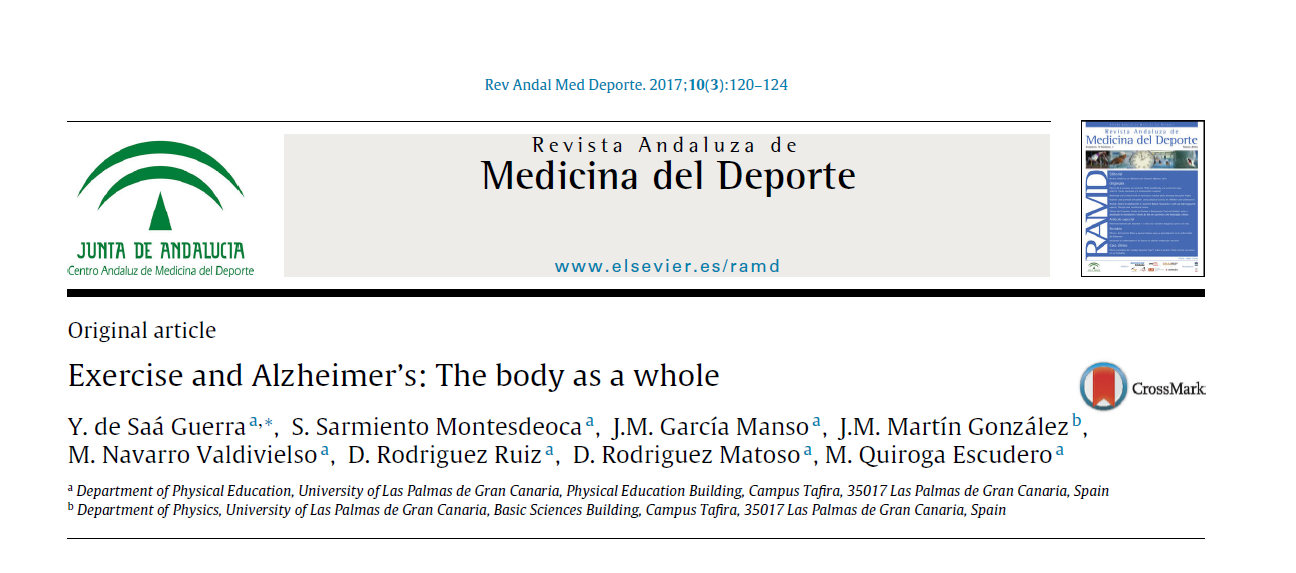
In our recent paper published in the journal Revista Andaluza de Medicina del Deporte, we expose the effects of an physical exercises protocol developed using complexity theory concepts.
The Alzheimer’s disease is a neurodegenerative disease characterized by or accumulation of proteins such as Tau or ß-amyloid, which causes progressive dementia in adulthood, leading to a state of total disability and death. The Alzheimer’s disease currently affects in Spain about 600.000 people (25% of those over 65 years) and about 44 million people worldwide.
It is the most common cause of dementia in Europe and perhaps the most common neurodegenerative disease worldwide. The costs of caring for people with this disease in Spain amounted to 37.000 million euros annually.
Physical exercise has previously been proven to have a positive effect on Alzheimer’s disease patients. Exercise can increase levels of brain-derived neurotrophic factor (BDNF) and other growth factors, stimulate neurogenesis, increase resistance to brain injury, improve learning and mental performance, arouse the growth of blood vessels, reduce of amyloid load, etc. But the key question is: what kind of training?
Exercise improves neuroplasticity (neuronal ability to change and adapt as a result of experience) through mental and physical skills linked to cognitive-associative brain circuits. Introducing controlled physical and cognitive stimuli, self-organization and connectivity among brain systems enhance. In our investigation, we designed and carried out motor and mental tasks with non-linear outputs (several solutions) and learning as order parameter. Tasks were performed simultaneously (physical and mental tasks), at the edge of the error seeking self-organized criticality.
Our findings suggest that the Alzheimer’s disease patients who trained using concepts from complexity theory were able to manifest improvements in both their mental and physical abilities. They showed a slight tendency of stabilization or a slowing of cognitive impairment aspects.
Results showed that patient’s self-organization was increased; and behaviors atrophied or inhibited reappeared. Therefore, we can observe that using these controlled perturbations, Alzheimer’s disease patients were able to manifest improvements in both their mental and physical capacities significantly, which meant an improvement in their quality of life and in the quality of life of their families as well.


